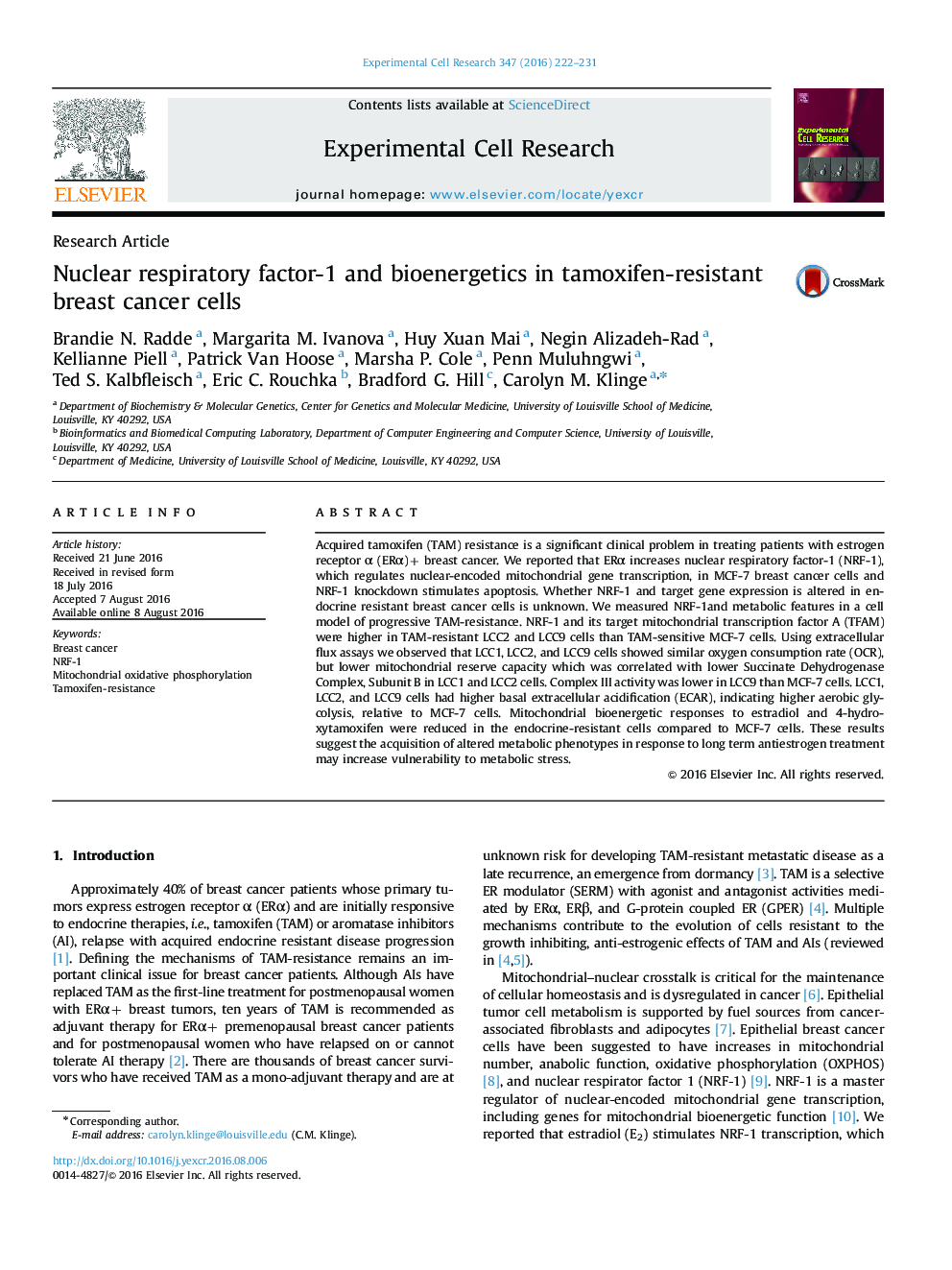| کد مقاله | کد نشریه | سال انتشار | مقاله انگلیسی | نسخه تمام متن |
|---|---|---|---|---|
| 2129901 | 1401567 | 2016 | 10 صفحه PDF | دانلود رایگان |
• NRF-1 and TFAM expression are higher in endocrine-resistant breast cancer cells.
• Oxygen consumption rate is similar in endocrine-sensitive and resistant cells.
• Mitochondrial reserve capacity is lower in endocrine-resistant cells.
• Endocrine-resistant breast cancer cells have increased glycolysis.
• Bioenergetic responses to E2 and tamoxifen are lower in endocrine-resistant cells.
Acquired tamoxifen (TAM) resistance is a significant clinical problem in treating patients with estrogen receptor α (ERα)+ breast cancer. We reported that ERα increases nuclear respiratory factor-1 (NRF-1), which regulates nuclear-encoded mitochondrial gene transcription, in MCF-7 breast cancer cells and NRF-1 knockdown stimulates apoptosis. Whether NRF-1 and target gene expression is altered in endocrine resistant breast cancer cells is unknown. We measured NRF-1and metabolic features in a cell model of progressive TAM-resistance. NRF-1 and its target mitochondrial transcription factor A (TFAM) were higher in TAM-resistant LCC2 and LCC9 cells than TAM-sensitive MCF-7 cells. Using extracellular flux assays we observed that LCC1, LCC2, and LCC9 cells showed similar oxygen consumption rate (OCR), but lower mitochondrial reserve capacity which was correlated with lower Succinate Dehydrogenase Complex, Subunit B in LCC1 and LCC2 cells. Complex III activity was lower in LCC9 than MCF-7 cells. LCC1, LCC2, and LCC9 cells had higher basal extracellular acidification (ECAR), indicating higher aerobic glycolysis, relative to MCF-7 cells. Mitochondrial bioenergetic responses to estradiol and 4-hydroxytamoxifen were reduced in the endocrine-resistant cells compared to MCF-7 cells. These results suggest the acquisition of altered metabolic phenotypes in response to long term antiestrogen treatment may increase vulnerability to metabolic stress.
Journal: Experimental Cell Research - Volume 347, Issue 1, 10 September 2016, Pages 222–231
